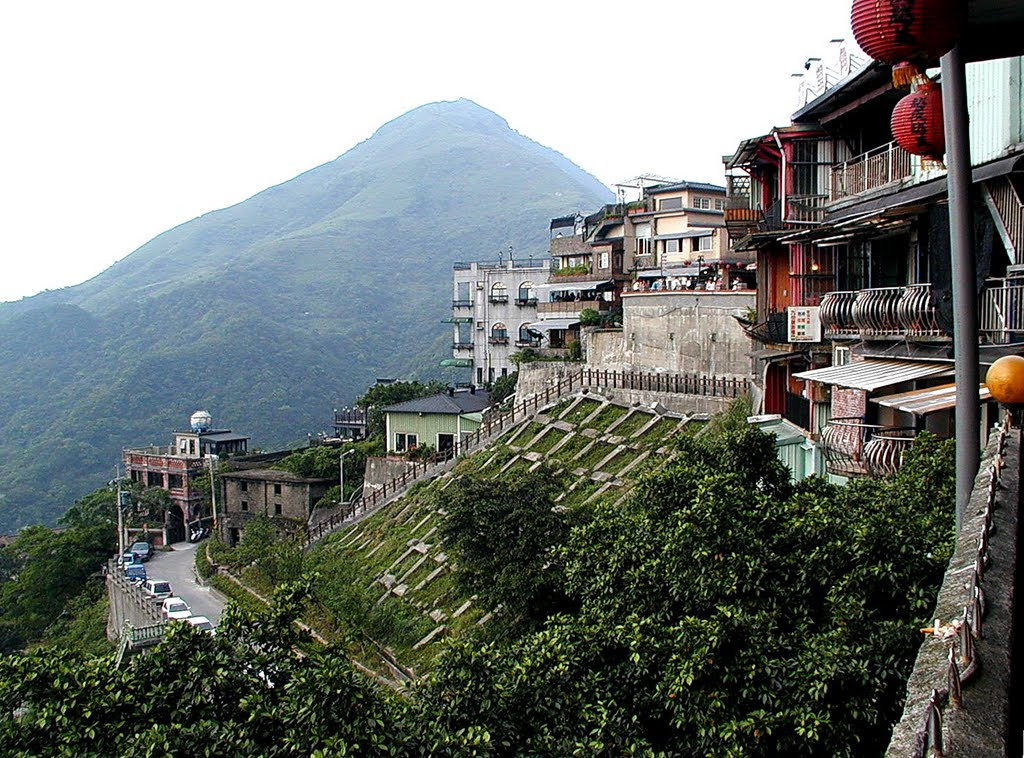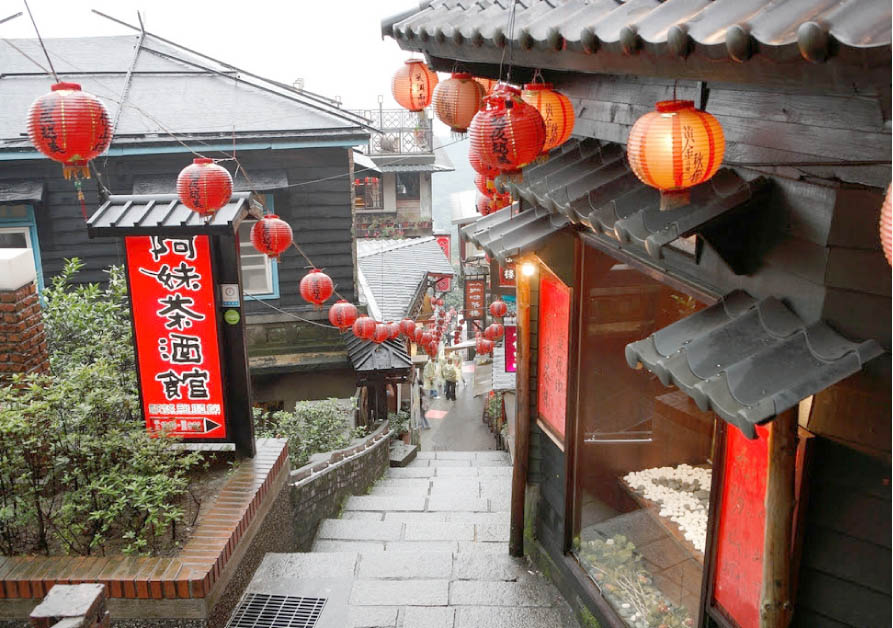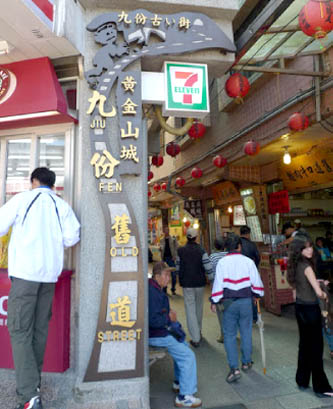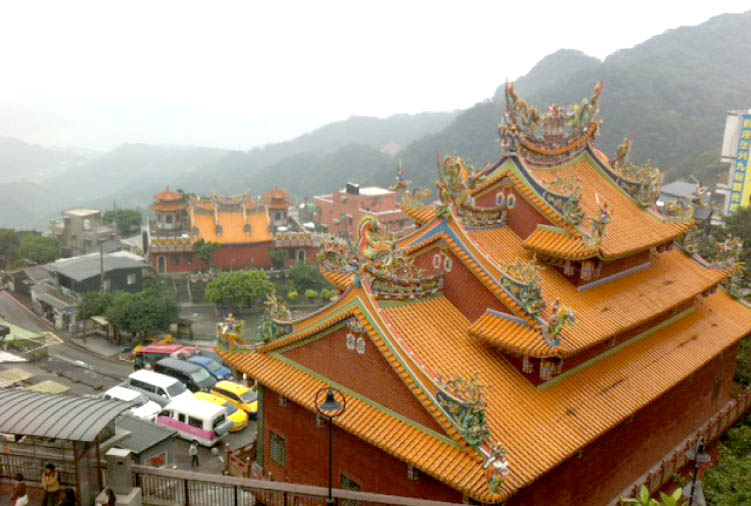First published in Tulay Fortnightly, Chinese-Filipino Digest 27, no. 7 (August 5-18, 2014): 16.
On a recent visit to Taipei, we wanted to do an out-of-town day trip. The choice was a toss up between the famous (for honeymooners, at least it used to be famous for that) Sun Moon Lake and the little-known Jiufen (九份). The latter was highly recommended by writer Nancy Lu, a long-time resident of Taipei, so we opted for that. Besides, it was an easy hour or two drive from the city, compared to having to fly to Sun Moon Lake.
It was, all around, a good choice.

Jiufen is located in the northeast of Taiwan, facing the Pacific Ocean. In the olden times, only nine families lived there, and when materials were brought, there was always nine pieces of the same object. Thus, the place was called Jiufen, or nine portions.
In the early 1890s, gold was found in the nearby hills, and in no time thousands of prospectors descended on the quiet village, which became known as the “gold city.”
During World War II, a prisoner of war camp was set up in the town, and prisoners – mostly British – were forced to work in the gold mines. After the war, the decline of gold mining led to the end of the town’s prosperity.
However, Jiufen’s quaint teahouses and cobblestone streets gave it a new lease on life as a tourist destination, starting in the 1990s.

Today, Taipei residents eager for a taste of the past as well as a respite from city life flock to the village, as well to enjoy great views of the ocean.
The main areas of interest are the two pedestrian streets, Jishan and Shuqi, lined on both sides with eateries, teahouses, souvenir shops, food stalls offering local specialties.
The most famous of these seem to be taro balls (芋圓 yuyuan, o-e in Hokkien), served hot or cold with sweet beans, and Grandma Lai’s Yuyuan on Jishan street is the most famous.
Of great fascination is the ice cream lumpia, made in front of you and to your specifications. A sheet of wrapper is laid out on the wooden counter, and a generous sprinkling of sweet peanut shaved from a huge block is added. A scoop of ice cream of your choice of flavor is put in together with fresh coriander, then folded up for a surprisingly delicious treat.

One can literally eat from one end of the street to the other, and then back again on another street or any of the little alleys and lanes snaking around the area. Open-fronted stores offer sample tasting of their wares, or you can buy food to go on little paper plates, anything from smelly tofu to shrimp balls (excellent!), washed down with ginger tea (a must buy, especially the one that comes in blocks) and plum wine.
Go for tea at the City of Sadness restaurant (Shuqi street), featured in the 1989 Venice Film Festival Golden Lion award-winning film “A City of Sadness.”

Or sit awhile over tea (a wide selection is offered) and tea snacks at the Jiufen Teahouse (Jishan street), where artists and writers used to gather. There is a kite museum, and of course a gold museum.
Songde Park features sculptures and a monument to the founder of the town’s mining culture, and beside the park is the old mining tunnel, excavated in 1927 but sealed by the government in 1971 for safety reasons.
We left Jiufen with tummies filled with local delicacies and bags laden with purchases, everything from ginger tea to dried lemon peel to wasabi flavored peanuts to an assortment of champuy, dried fruits and snacks.
Jiufen will surely be on our itinerary on our next trip to Taipei.
